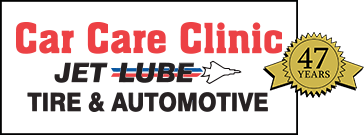This article originally appeared in the Castol Blog.
As fuel prices continue to ratchet upward, drivers are employing several strategies to improve gas mileage. Many of these methods are obvious steps, such as driving less and/or more slowly, removing unnecessary weight from the vehicle, and keeping a vehicle in optimum tune. One tactic in particular, though, not only reduces gas consumption, but also has benefits for the life of your engine: an oil change.
Some might wonder how simply putting fresh oil in the crankcase could affect fuel economy. Clean oil reduces wear caused by friction between moving parts and it removes harmful dirt and grit from the engine. Reducing internal resistance between moving parts allows the engine to spin more freely, thus resulting in less fuel consumption.
As an analogy, have you ever tried to open a door with rusty, squeaky hinges? A few drops of clean oil can loosen things up, and that door now swings easily. That’s basically what an oil change does for the far more complex internals of engine. Clean oil is vital to engine performance and durability, as it lubricates, cools and cleans the engine as it circulates.
In addition, some oils contain additives that reduce friction and may increase a vehicle’s fuel economy by three percent or more, according to government research. Look for motor oil that says “Energy Conserving” on the American Petroleum Institute (API) performance symbol to be sure it contains friction–reducing additives.
Synthetic oils also offer an advantage over mineral oils, particularly under extreme weather or performance conditions. As a manufactured product (rather being refined from crude oil), synthetic motor oil can be specially formulated to have extremely good flow characteristics and resistance to viscosity breakdown, improving engine efficiency.
Whether natural or synthetic, the grade of oil in your engine can also affect your fuel efficiency. For instance, running 10W–30 motor oil in an engine designed to use the lighter 5W–30 can actually worsen your gas mileage a percent or two. By using the lowest multigrade of oil recommended in your owner’s manual, you can improve the fuel efficiency of the engine, particularly when starting it cold.
Improving fuel economy by a couple percentage points might not sound like a lot, but combined with additional methods, they can add up to some substantial savings. What are those other tips to improve fuel economy?
Starting from the ground up, check your tire pressure. Under–inflated tires create more resistance, thus consuming more gas, as much as .4 percent for every one psi drop in pressure of all four tires. Adding the correct amount of tire pressure not only helps your vehicle run more efficiently, but also doesn’t cost anything. Look on the sidewall of the tire or in the owner’s manual for the recommended psi.
As noted at the outset, an engine tune–up is another valuable way to save fuel. According to government data, fixing a car that is noticeably out of tune or has failed an emissions test can improve its gas mileage by an average of four percent (results will vary based on the kind of repair and how well it is done). And fixing a serious maintenance problem, such as a faulty oxygen sensor, can improve your mileage by as much as 40 percent!
A tune–up typically includes replacing a clogged air filter, which can improve your vehicle’s gas mileage by as much as 10 percent. Not only will replacing a dirty air filter save gas, it will also protect your engine by keeping out harmful grit and deposits.
Changing your driving habits will help with fuel consumption, too. Rapid acceleration and braking can lower your fuel economy by a third, according to government estimates. Observing freeway speed limits can impact fuel economy as well, since fuel economy greatly increases for every five mph above 60 mph. Employing cruise control to maintain a more constant speed can help to save gas as well.
Excessive idling also affects fuel efficiency, especially on vehicles with large engines. Contrary to popular belief, idling isn’t an effective way to warm up your vehicle, even in cold weather. The best way to warm it up is to drive it. In fact, with today’s engines, you need no more than 30 seconds of idling on winter days before you start to drive.
Note that an idling engine isn’t operating at its peak temperature, which means that fuel doesn’t undergo complete combustion. This leaves fuel residues that can condense on cylinder walls, where they can contaminate oil and damage parts of the engine. For example, fuel residues are often deposited on spark plugs. As you spend more time idling, the average temperature of the spark plug drops. This makes the plug get dirty more quickly, which can increase fuel consumption by 4 to 5 percent.
So, when should you turn off the engine? Believe it or not, anything more than several seconds of idling uses more fuel than restarting the engine. So as a rule of thumb, if you’re going to stop for 10 seconds or more (except in traffic), turn off the engine. You’ll save both gas and money.
Planning trips more carefully is also a benefit. Combine errands to minimize the number of short trips. If possible, avoid driving during peak rush hours, or take advantage of car–pooling and ride–share programs.
On longer trips, avoid over–loading or carrying unneeded items, to reduce weight. Also reduce aerodynamic drag by placing luggage and other items inside your trunk instead of on the roof.
For pickup trucks, installing a bed or tonneau cover can significantly reduce drag as well by anywhere from 4.2 to 7.8 percent, according research by the Specialty Equipment Market Association. This amount of wind resistance varies, depending on the type of cover and vehicle. (Interestingly, this same data indicates that driving with the tailgate lowered makes no difference at all in fuel economy.)
In addition, when you purchase fuel, use the recommended octane level. Unless your engine is knocking, buying higher octane is usually a waste of money. Altogether, these driving and maintenance tips can mean significant improvements in the amount of fuel your vehicle consumes.


